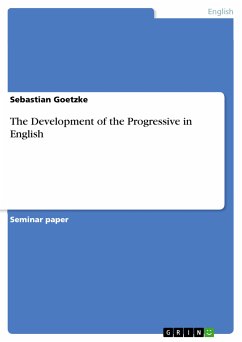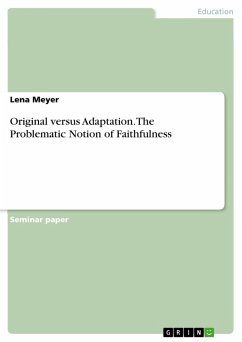Seminar paper from the year 2003 in the subject English Language and Literature Studies - Linguistics, grade: 1,3 (A), University of Dusseldorf "Heinrich Heine" (Anglistics Institute), course: Tense-Aspect-Mood, language: English, abstract: In order to present a comprehensive and all-embracing picture of a linguistic phenomenon like the "progressive" it is important to provide an analysis of the problem from both a synchronic and a diachronic point of view. Following this rule the subsequent paper is divided into two main parts. In the beginning I will try to give a global picture of the progressive form in English as it is used today and I will focus on its meaning and basic functions as well as on its separation from other linguistic states. The second section of this paper is devoted to the historical sources of the English progressive diachronically emerging from Old English over Middle English and Early Modern English into the progressive taught in modern grammars and school books. I do have to mention though that, since I am not a student of Old English or Middle English, my abilities in reading and understanding certain sources and interpretations are limited. In the process of this work I have tried to use secondary sources on Old and Middle English rather than primary sources and I have also tried to leave out most references or citations to primary sources. Nevertheless I believe that, in this paper, I can prove and demonstrate that the English progressive form used nowadays is derived diachronically and directly from Old English. I will present authors who support this view as well as others who oppose it. As my main source I would like to mention Johannes Scheffer, Bybee, Susan Fitzmaurice, Eva Edgren and Debra Ziegeler.
Dieser Download kann aus rechtlichen Gründen nur mit Rechnungsadresse in A, B, BG, CY, CZ, D, DK, EW, E, FIN, F, GR, HR, H, IRL, I, LT, L, LR, M, NL, PL, P, R, S, SLO, SK ausgeliefert werden.









